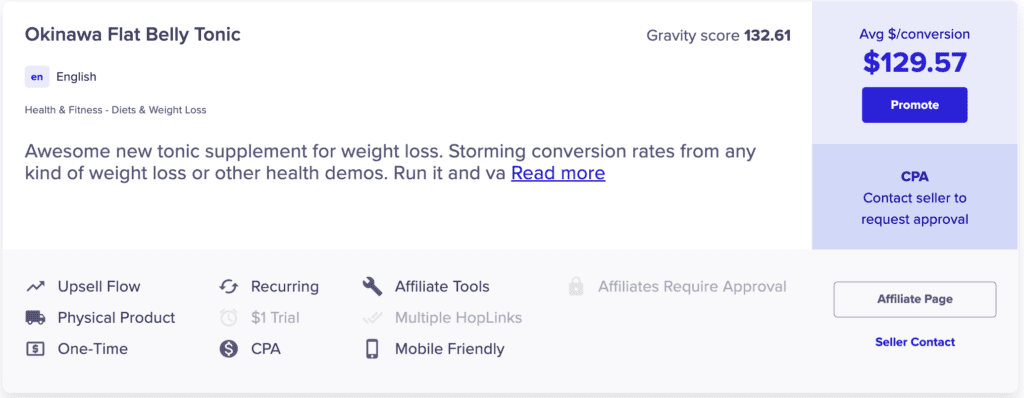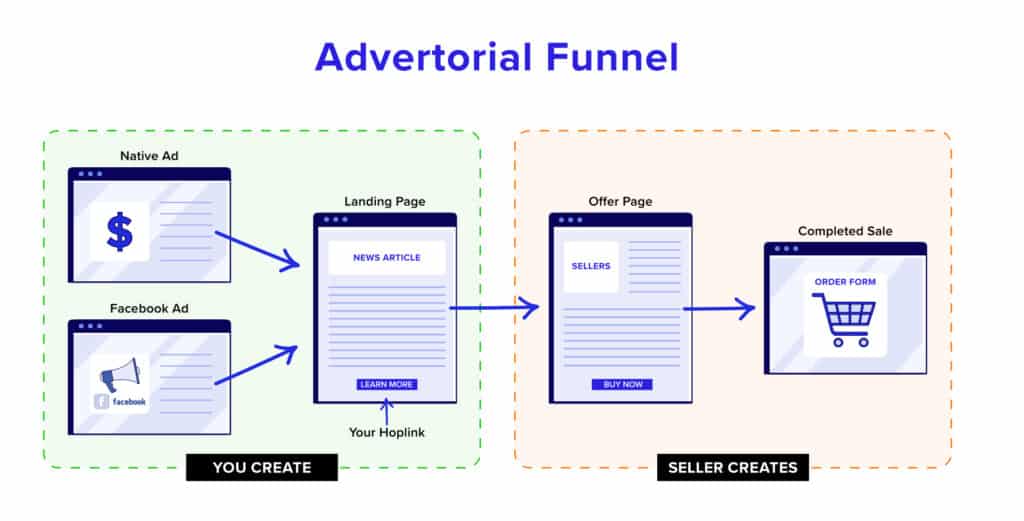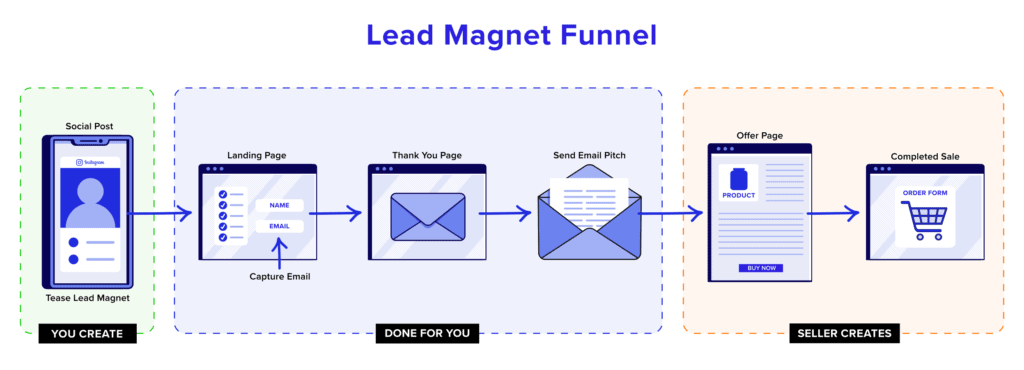Have you been doing everything you can to succeed with affiliate marketing, but still aren’t seeing the sales and commissions you expected?
Well, we’ve all been there! Affiliate marketing can be tricky, especially if you’re still new to the many different building blocks of a successful affiliate business. The important thing is NOT to give up – just go into troubleshooting mode instead!
In this post, we’ll look at all the potential problem areas that could be keeping you from finding the affiliate marketing success you deserve!
NOTE: This post assumes you’re already using a proper affiliate tracking link (i.e. hoplink on ClickBank) and are getting credit for any links pointing to your chosen affiliate offer. If you’re not seeing any hops, it’s worth testing your hoplink to make sure it’s working.
Why You’re Not Getting Affiliate Sales
In this article, I’m going to dig into specific issues that could be hurting your affiliate marketing success – but first, I want to address the overall approach you should be taking!
At a high level, the point of affiliate marketing is to sell someone else’s product. You’re basically a marketer-for-hire, entering into a partnership with a merchant/product owner to promote their affiliate offer in exchange for a commission (which can be as high as 75% on ClickBank).
With that in mind, every decision you make in your business should be to generate more sales. And as a new affiliate marketer, you should focus on these three decisions first:
- Your niche.
- Your traffic channel.
- Your affiliate product(s) to promote.
Let’s quickly take a look at each one!
1) Niche
In terms of your chosen topic or niche, three of them rise above all others:
- Health
- Wealth
- Relationships
These “big 3” niches are by far the easiest to promote in, because they’re the most universal and in-demand. After all, not everyone cares about improving their golf swing, but virtually everyone DOES care about being healthy and fit, making more money, and having good relationships!
With that said, the big 3 niches are also MUCH more competitive, which is why you might look to find success in narrower niches, like the golf example earlier.
In those cases, your best chance of success is if you have a LOT of experience to bring to your marketing. If you know your audience’s pain points and can speak their language, you can dominate a smaller niche and do very well for yourself!
2) Traffic Channel
We’ve written about the 5 primary types of affiliates we see, but as a quick reminder, they are:
- Content publisher
- PPC/paid media buyer
- Email marketer
- Social media influencer
- Community manager
The idea here is to find a traffic channel where your target audience is likely to be. For example, even within the social media influencer category, you’ll probably have the most success targeting older people on Facebook, millennials on Instagram, and Gen Z on TikTok. Or if you’re targeting professionals or businesses, you can go with LinkedIn.
Ultimately, you have to get in front of the right audience if you’re going to promote products to them. It’s up to you to decide whether a website, podcast, social media account, email list, Discord server, or other traffic channel is the best way to do it.
3) Affiliate Products
Affiliate products or offers are the things being sold. This could be a book, a multi-thousand dollar course, a consumable supplement, or even software! You can find thousands of quality offers right now on ClickBank’s marketplace.
So, when you’re ready to choose an affiliate products to promote, I would first find a short list of offers that your existing audience might want. Then, narrow it down based on the data from each offer.
Start by looking at the dollar amount for an average conversion (displayed as the Avg $/conversion on ClickBank’s marketplace).

The higher this number is, the more money you can afford to spend to promote the product, generally speaking.
But there are other important factors to consider, such as the presence of an upsell flow, the earnings per click, the refund rate, affiliate tools page resources, and the quality of the seller funnel.
You have to weigh them all to decide which offer is worth putting in front of your audience and testing. Ultimately, the numbers that matter most are your own – if you’re making a profit, then the product is a winner! If not, then you might need to keep looking.
5 Common Affiliate Sales Issues
Now that we’ve covered the main three decisions you need to make as an affiliate marketer – the niche, traffic type, and affiliate offer – it’s time to diagnose the 5 most common issues that might be why you’re not getting affiliate sales!
1) Faulty Audience Targeting
My first recommendation is to make sure you understand your audience.
If you don’t currently have an ideal customer profile (ICP) or buyer persona defined, you’ll have a difficult time figuring out where they congregate online and how best to talk to them. So, take a step back and ask yourself about the demographics and other fundamental traits of your audience.
Some of it is just common sense: Don’t try to promote a golf swing product to teenage TikTok users without the disposable income to go golfing – or buy a digital product about improving their golf game. Similarly, maybe don’t try to reach Baby Boomers about a pelvic floor product using Snapchat.
Not sure where to get details on the right audience for an affiliate product? Sometimes, your chosen affiliate offer will have a tools page or resources page with a lot of that information.
Or you could start with an audience-first approach and THEN pick offers that match. If you have an organic social media account, a YouTube channel, or a blog with Google Analytics, you should be able to find at least some data on the audience you’re currently reaching.
Ultimately, the more time you spend building your brand, the better you’ll know your audience.
2) Missing Funnel Stage(s)
It’s still all-too-common for affiliates to try to send traffic straight to an offer page (or even worse, the checkout page).
Unfortunately, there are a few reasons why this doesn’t work:
- Many online platforms – from native ad networks to popular social sites like Facebook – don’t allow affiliate links in your ads, so you’ll run afoul of their terms of service and risk ad or account shutdowns by linking straight to the offer page.
- It’s jarring for social and search users to jump straight from an ad to an offer page – and it’s also pretty quick for readers of your blog or website content.
The solution? Well, you need to make sure you have a full marketing funnel!
Here are two of the most common funnels we recommend.

The advertorial funnel is a good fit if you run ads like native, Facebook, or YouTube. You can point people to your own landing page (often called an affiliate bridge page) before sending them over to the offer page to make a purchase.

The lead magnet funnel is a good fit if you’re reaching an audience through organic channels, such as social media or a blog. You can point people to a landing page where you capture their email address, and then send them an email pitch with the link to the offer page to make a purchase.
It’s a simple mistake, but leaving out one or more stages in your funnel can crush your conversions. No matter how you’re getting your traffic, you have to respect human nature. People need a little time to be sold – and ideally, some trust in your brand too!
NOTE: Want to learn more about funnels? We just released a new Funnel Workshop you can check out as part of Spark by ClickBank, the official affiliate education program from ClickBank!
3) Mismatched Messaging/Hook
When it comes to affiliate marketing, your primary goal is just getting your audience to take the next step. But a HUGE part of that is the message you use to (1) Get their attention (2) Persuade them to move on to that next stage in your funnel.
I think one of the biggest mistakes most affiliates make is writing copy that doesn’t resonate with their audience.
So, what hook are you employing to “sell the click?” What’s your core angle? Is it interesting? Is it fresh or novel? Is it specific?
For example, are you saying something general like “You can lose weight!” or are you saying, “5-Second Tropical Loophole Dissolves 59 lbs.”
And timing-wise, does all of this match where your audience is at in each step of the buyer’s journey? The typical buyer’s journey usually looks something like this:
- Problem Aware
- Solution Aware
- Product Aware
Typically, the “colder” your traffic is, the more you have to lean on curiosity-based hooks that will grab attention and pique interest.
Think of it like a comedian who is performing in front of a brand-new crowd versus a stadium of his biggest fans. He needs to choose jokes that will appeal to an audience that doesn’t already know him.
Similarly, the way you write a hook is completely different for someone in the early stages of the buyer’s journey. You’ll want to talk to people who are aware of a specific problem – like needing to lose weight – compared to someone who’s actively looking for a solution or product, especially on platforms like Facebook where people don’t necessarily go because they want to buy something.
Put some real time and effort into coming up with a hook that will meet your audience where they are, including their stage in the buyer’s journey.
4) Low-Converting Affiliate Product
Another potential issue may be that you’ve chosen the wrong affiliate product.
Often, if you focus on the highest-ranked products in a specific product category on ClickBank’s marketplace, you should be okay – but it’s always possible that your chosen offer just doesn’t convert as well as you need it to.
On average, we see a conversion rate of around 1% for products promoted by affiliates, but this number can be higher on some products and lower on others. Plus, individual affiliates can dramatically outperform the benchmark conversion rate.
If you feel like the rest of your campaign is performing well, but you’re not getting at least 1 sale per 100 hops (i.e. clicks on your tracking link), then it might be time to test another product.
5) Insufficient Testing
Speaking of testing, here’s another HUGE oversight we see from many of our affiliates: no testing!
The whole idea behind testing is to optimize your campaign for higher conversions. So, what does that look like?
On a blog, it might mean testing different formats for promoting your product, like an in-text link versus a banner image – and on a YouTube video, it might mean experimenting with a mid-video CTA to click on your affiliate link, or a different script for promoting the product.
No matter which traffic channel you’re promoting from, you should always be cycling through different messages, creative (i.e. images or videos), and calls to action to see what works best.
Not only will this keep your marketing fresh, but it’ll also help you get to know your audience better and better over time. You’ll discover which messages and visuals they respond to, and which ones they don’t!
BONUS: Lack of Trust or Reputation
I wanted to throw in one more quick issue that some affiliates tend to forget about: their own reputation.
Compared to a more traditional seller or business, affiliates don’t absolutely NEED to build a relationship-based business. Plenty of affiliates make a lot of money with an impersonal niche site or paid ad campaign – the customer never even knows about them.
But take a step back for a second: If the potential customer sees one of your ads or gets an email from you, and they actually know who you are, how big of a leg up is that in seeing more conversions?
As people become savvier and more comfortable online, it’s getting harder to convince absolute strangers to make a purchase. Like any brand that’s built up brand equity over time, your affiliate business can too – and think of how much more successful you’ll be if your product recommendations come from a trusted source?
I always tell affiliates to think of themselves as a full-fledged media company, and not just a specific traffic channel. If you become the place everyone turns to for advice in your niche, you’ll find success that much faster!
Why You’re Not Getting Affiliate Sales Wrap-up
I hope this guide has helped you reflect on your approach to affiliate marketing and given you some good ideas to implement in your own business.
In the end, pinpointing the specific issue or issues keeping you from getting sales can be difficult, but that doesn’t mean you should stop trying!
As an affiliate myself, it took a few years to get my first sale on ClickBank with an affiliate website. I had to learn a LOT to get to that point, but I made it – and I believe everyone else can too.
Of course, there’s more to affiliate marketing than I could EVER cover in a single article, but fortunately, ClickBank offers additional affiliate education with Spark by ClickBank! This is our official bundle of affiliate marketing courses featuring industry experts in everything from copywriting to email marketing to TikTok.
If there’s a skill you need to learn, Spark is sure to have something for you. To learn more about Spark, check it out here.
Best of luck getting those affiliate sales!







